- Home
- Richard Dawkins
Brief Candle in the Dark Page 2
Brief Candle in the Dark Read online
Page 2
Here’s a digression whose relevance will become apparent. In 1998, I was invited to present the trophy at the final of University Challenge. This is a general knowledge quiz show on BBC television, in which representatives of universities (the colleges of Oxford and Cambridge are treated as separate entities for this purpose) compete in a complicated form of knockout competition. The standard of general knowledge displayed can be astonishingly high – the popular Who Wants to Be a Millionaire? is very low-grade by comparison, and presumably gains its appeal from the element of gambling for large rewards. In my speech in Manchester, presenting the trophy to the 1998 winners of University Challenge (Magdalen College, Oxford, who defeated Birkbeck, London, in the final), I said (according to a quote in Wikipedia, which agrees with my memory):
I’m conducting a campaign at Oxford with my colleagues to make them abolish the A-Level [the nationwide school-leaving exam, which tests specialist knowledge] as the criterion for admitting students, and substitute University Challenge. I’m very serious about this; the kind of mind you need to win University Challenge – it’s not the knowledge that matters – but it’s the retentive mind to pick things up wherever you are that you need at university too.
I told a story of an undergraduate studying history at Oxford, who was unable to find Africa on a map of the world. When I said to a colleague that she should never have been admitted to our (or any) university, he protested that maybe she had missed the relevant geography lesson at school. That is precisely not the point. If you need a geography lesson in order to know where Africa is – if, by age seventeen, you have somehow failed to imbibe such knowledge by osmosis or simple curiosity – you surely don’t have the sort of mind that would benefit from a university education. That is an extreme illustration of why I suggested a University Challenge-style general knowledge test as part of our entrance procedure: not general knowledge for its own sake, but general knowledge as a litmus test for a teachable mind.
My suggestion (tongue somewhat but not wholly in cheek) has yet to be taken seriously. But Oxford did (still does) make an effort to test more than just factual knowledge narrowly relevant to the proposed subject of study. A typical question that I might ask in an interview (derived from Peter Medawar) was:
The artist El Greco had a reputation for painting his figures especially long and thin. It’s been suggested that the reason for this is that he had a defect in his vision, which made everything appear stretched in the vertical direction. Do you think that is a plausible theory?
Some students immediately got it, and I would rate them highly: ‘No, it’s a bad theory because when he looked at his own paintings they would be even more stretched.’ Some didn’t get it at first, but I was able to coax them through a line of reasoning until they did see the point. Some of them were then clearly intrigued, perhaps annoyed with themselves for not seeing the point straight away, and I’d rate them fairly highly too, as teachable. Some might put up a fight, and I’d give them credit for that too: ‘Perhaps El Greco’s vision was defective only when he looked at more distant objects like the model, not when he looked at close objects like his canvas.’ Others just didn’t get the point at all, even when I tried to lead them towards it, and I marked them down as less likely to benefit from an Oxford education.
I’m going to expand a little on the kinds of questions that Oxford tutors ask at interview. This is partly because I think the art of interviewing for university entrance is interesting in its own right. But also, if I betray some inside tips it might actually help prospective students hoping to get into one of those (now rather few) universities that still bother to interview.
Here’s a similar conundrum to the ‘El Greco question’ which I would sometimes use:
Why do mirrors reverse from left to right but don’t turn the image upside down? And is it a problem in psychology, physics, philosophy or what?
Again, I was mostly testing the teachability of students, their ability to be led through a chain of reasoning even if they didn’t immediately solve the puzzle. Actually, that particular puzzle is surprisingly difficult. It helps if you reframe it and think not about a mirror but about a glass door, say a door in a hotel that has LOBBY written on it. When you see it from the other side, it says not . It is easier to explain why this is so for the glass door than for the mirror. Generalizing to the mirror is then straightforward physics: a good example of the value of reframing a problem to make it tractable.
Or I might remind them that the image on our retina is upside down, yet we see the world the right way up. ‘Talk me through an explanation for that.’ Another favourite question to test their biological intuition began: ‘How many grandparents do you have?’ Four. ‘And how many great-grandparents?’ Eight. ‘And how many great-great-grandparents?’ Sixteen. ‘Right then, how many ancestors do you think you had two thousand years ago, in the time of Christ?’ The brighter ones tumbled to the fact that you can’t go on doubling up indefinitely, because the number of ancestors rapidly overtakes the billions of people in the world now, let alone the comparatively small number that were alive in the time of Christ. That proved to be a good line of reasoning to coax them to the conclusion that we are all cousins, with numerous shared ancestors who lived not so long ago. Another way to put the question might be: ‘How far back in time do you think you’d have to go before you hit an ancestor that you and I share?’ I treasure the answer given me by one young woman from rural Wales. She looked me up and down with an implacable gaze and then slowly delivered her verdict: ‘Back to the apes.’
I’m afraid she didn’t get in (although not for that reason). Nor did the young man from a public school1 who lolled back in his chair (the image of him putting his feet on the desk has got to be a false memory born of the impression he projected) and drawled his reply to one of my best sallies: ‘That’s a pretty damned silly question isn’t it?’ I must say I was tempted by him, but the competition was too stiff so I recommended him to a pugnacious colleague in another college, who accepted him. That young man later went out to do field research in Africa and was said to have stared down a charging elephant.
A colleague in philosophy was fond of this interview question, and I agree that it’s a good one: ‘How do you know you aren’t dreaming at this moment?’ Another colleague liked this one:
A monk [not sure why it had to be a monk, just to give colour, I suppose] set off at dawn to walk up a long, winding path from the bottom to the top of a mountain. It took him all day. When he reached the summit he spent the night in a mountain hut. Then, at the same time next morning, he walked all the way down the same path again to the bottom of the mountain. Can we be sure that there is some particular spot along the path, such that the monk passed that spot at exactly the same time on both days?
The answer is yes, but not everybody is able to see, or explain, why. The trick, again, is to reframe it. Imagine that, as the monk sets off to walk up the mountain, another monk simultaneously sets off on the reverse journey along the same path, from the top to the bottom. Obviously the two monks have to meet at some particular point along the path at some particular time during the day. I was amused by this conundrum, but I don’t think I ever used it in an interview because, once you’ve got the point, it doesn’t, unlike the El Greco question (or the mirror question or the inverted retinal image question or indeed the dreaming question) lead on to anything further. But once again, it illustrates the power of reframing: I suppose it’s an aspect of ‘lateral thinking’.
A question that I never used, but that might be good for testing the sort of mathematical intuition that biologists need (as opposed to mathematical skills like algebraic manipulation or arithmetic calculation, which also do no harm), is this. Why do so many influences – gravity, light, radio waves, sound etc. – obey an inverse square law? As you move away from a source, the strength of the influence diminishes steeply as the square of the distance. Why should this be? One way to express the answer intuitively is this. The infl
uence, whatever it is, radiates outwards in all directions, plastering itself over the inner surface of an expanding sphere. The larger the area of the expanding surface, the more ‘thinly spread’ the influence is. The area of a sphere (as we remember from Euclidean geometry and could prove if we set our minds to it but wouldn’t bother in the interview) is proportional to the square of the radius. Hence the inverse square law. That’s mathematical intuition without (necessarily) mathematical manipulation, and it’s a valuable quality to look for in a biology student.
The interview might proceed to a further, less mathematical but still interesting, discussion of possible biological applications, which would help in judging the teachability of a student. Female silkworm moths attract a mate by emitting a chemical, a ‘pheromone’. Males can detect it at an astonishingly great distance. Would we expect the inverse square law to apply here? On the face of it, perhaps yes, but the student might point out that the pheromone will be blown in a particular direction by the wind. How does that affect matters? The student might also point out that, even when there’s no wind, the pheromone would not diffuse outwards in an expanding sphere, if only because half of the sphere would be stopped by the ground and most of the other half would be too high. Which might prompt the tutor to divulge the following intriguing fact, almost certainly unknown to the student.
Because of an interaction between pressure and temperature gradients, sound travels through the sea further (and more slowly) at some depths than at others. There’s a layer called the SOFAR Channel or Sound Channel in which, because sound is reflected back into the layer from its margins, it propagates in something more like an expanding ring than an expanding sphere. The distinguished whale expert and conservationist Roger Payne reckons that when whales with a very loud song position themselves in the Sound Channel, their songs could theoretically be heard right across the Atlantic (itself a captivating idea to inspire the student being interviewed). Would the inverse square law apply to these whale songs? If the sound were ‘plastered’ over the inside of an expanding ring, the student might reason that the area of ‘plastering’ would be proportional to something closer to the radius than the square of the radius (circumference of circle directly proportional to radius). But it obviously wouldn’t be a perfectly flat circle. A legitimate answer to the question, and one that I’d applaud, would be: ‘This is getting too complicated for my intuition. Let’s phone a physicist.’
Like, I think, most college tutors, I developed a loyalty to many of the candidates I interviewed. I was unwillingly obliged to reject far more than half of them, and it often hurt me to do so. I would make strenuous efforts to see them placed in other Oxford colleges, urging on colleagues the virtues of ‘my’ candidates. I used to resent it when another college accepted from its own list of applicants a candidate whom I thought clearly less qualified than one whom we, at New College, had had to reject through sheer force of numbers. But I suppose my colleagues had the same loyalties to ‘their’ candidates. The Oxford system of allowing all the colleges to admit candidates separately has little to be said in its favour and much against. My guess is that the sheer complexity of the system puts not a few candidates off applying to Oxford at all. And that’s a better reason for being put off than the absurd misperception that Oxford is ‘posh’ or ‘snobbish’ (as it admittedly used to be, but is no longer – quite the reverse).
For most of my adult life I have looked younger than I am (a point we’ll come back to in the chapter on television), and this led to an amusing incident during one interview season. Exhausted and parched after a whole day of interviewing entrance candidates, I repaired to the King’s Arms pub, just outside New College. I was standing at the bar waiting for my beer when a tall young man came striding over, put his arm sympathetically around my shoulder and said: ‘Well, how did you get on then?’ I recognized him as one of the candidates I had just interviewed. He must have remembered my face, too, as one that he’d seen during the day, and thought I was one of his rivals. Andrew Pomiankowski won his place at New College, got an exceptionally high first-class degree, went on to do a DPhil (Oxford- and Sussex-speak for PhD) with John Maynard Smith at Sussex University, and is now a professor of evolutionary genetics at University College, London. He was just one of many very clever pupils whom it was my privilege to teach.
Here’s another story of an outstanding pupil well suited to the tutorial system. When I was tutoring in my room in New College, I often overran the hour and my next student would wait outside. I hadn’t realized that my voice was audible through the door until, on one occasion, I was holding forth on some topic or other when the door suddenly burst open and the next student came charging in shouting indignantly: ‘No no no, I really cannot agree with that.’ All credit to Simon Baron-Cohen. I’m sure he was right and I was wrong. He is now a professor at Cambridge, famous for his pioneering work on autism (if a little less famous than his cousin Sacha Baron-Cohen, the amusingly scandalizing actor).
My graduate student, star pupil and indeed later mentor Alan Grafen – of whom much more in later chapters – was not one of my own New College undergraduates, but his friend and collaborator Mark Ridley was. Less mathematical than Alan, Mark is a prodigiously knowledgeable scholar, historian of biology, synthesizer, critical thinker, learned reader and elegantly stylish writer. He went on to write many important books, including what was to become one of the two leading textbooks of evolution: the kind that American campus bookstores seem to order by the cubic yard, restocking with new editions at regular intervals. Alan and Mark have worked together on several occasions, including one field project on albatrosses, camping on a Galápagos island with a very clever young woman from Germany, Catie Rechten. Alan later told me that, when he and Mark were flying out to Galápagos together, he became aware of a strange, low murmuring sound coming from the next seat. On investigation, it turned out to be Mark, reciting Latin poetry to himself. Yes, that’s Mark, and no doubt he got the quantities right on the elegiac couplets. Also very Mark is his acknowledgement, in his first book, to Professor Southwood, who stood in as thesis supervisor ‘when Richard Dawkins was away in the Plantations for two sabbatick terms’. ‘The Plantations’ meant Florida.
Mark is not to be confused with his contemporary at Oxford, Matt Ridley (no known relationship, although Matt investigated and established that they are in the same Y-chromosome tribe). I count both as dear friends; both are first-class biologists and successful writers. On one occasion, a journal editor succeeded in getting them to review each other’s books in the same issue without telling them. Each was complimentary about the other, and Mark wrote that Matt’s book would be ‘an excellent addition to our joint CV’.
In 1984 Mark and I accepted the invitation of Oxford University Press to be the founding editors of a new annual journal, Oxford Surveys in Evolutionary Biology. We only lasted three years in the job, before handing our baby over to Paul Harvey and Linda Partridge. But we were pretty pleased with the distinguished authors we managed to capture during those three years (papers were commissioned rather than submitted), together with a star-studded editorial board to grace the title-page.
At the end of my undergraduates’ Oxford careers, I took very seriously my role in coaching them for their final examinations. American students typically sit an exam at the end of every term in every course they take (and often a mid-term exam as well). Oxford is very different. Apart from informal tests called ‘Collections’, which are administered separately by the various colleges to monitor progress and have no official standing, most Oxford students have no proper exams at all between the end of their first year and the end of their third. Everything is packed into the terrible ordeal of ‘finals’ – an ordeal exacerbated by the requirement that they dress up in ‘sub fusc’ for the occasion. In my time this dress code was dark suit and white bow tie for men, dark skirt, white shirt and black tie for women, black academic gown, black academic cap or mortar board. Since 2012 the authorities have foun
d a neat form of words to proclaim a politically acceptable sex-blindness: ‘students identifying as either sex can wear historically male or female clothes’.
Adding to the intimidating atmosphere of sub fusc is the strict invigilation. Officially, students wishing to visit the men’s or women’s room have to be escorted by a minder of the same sex, to make sure they don’t cheat by looking things up while there, but by the time I came to be an invigilator we usually didn’t bother with that rule. At least in my time there was no need to frisk examinees for internet-capable mobile phones, as there presumably must be today.
The whole performance is calculated to terrify, and nervous breakdowns are not uncommon around the time of finals. My colleague David McFarland, tutor in psychology at Balliol College, was once telephoned by the invigilator in the examination room: ‘We’re getting concerned about your pupil Mr —. Since the exam began, his handwriting has been growing steadily larger, and each letter is now three inches across.’
I saw it as the duty of a college tutor to see students at frequent intervals during their last term to hold their hands through the ordeal of finals and the weeks of revision leading up to it. I would take the whole cohort together in my room for regular coaching in exam technique, and I made them do lots of mock exam questions, each in exactly one hour. The self-imposed time limit was important. In each of their written papers, they would have three hours to write three essays, chosen from about twelve on offer. In our joint counselling sessions I urged them not to deviate too far from allocating equal time – one hour – to each of the three essays. I was exaggerating a little, in the interests of warning them how many students under pressure fall into the trap of getting carried away with a favourite topic, devoting most of their time to it and leaving no time to answer less preferred questions.

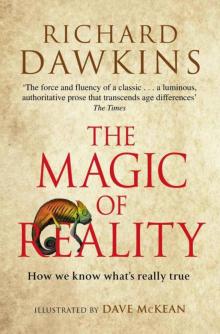 The Magic of Reality
The Magic of Reality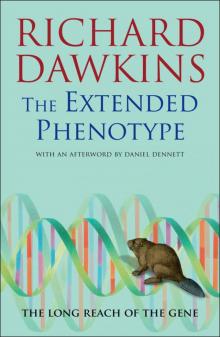 The Extended Phenotype
The Extended Phenotype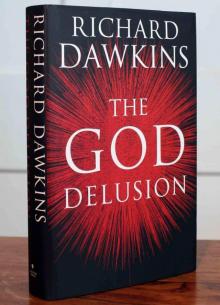 The God Delusion
The God Delusion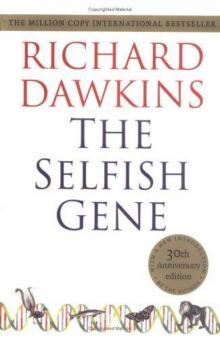 The Selfish Gene
The Selfish Gene The Blind Watchmaker
The Blind Watchmaker The Greatest Show on Earth
The Greatest Show on Earth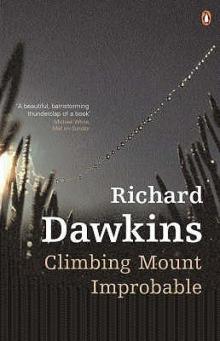 Climbing Mount Improbable
Climbing Mount Improbable Outgrowing God
Outgrowing God Brief Candle in the Dark
Brief Candle in the Dark The Greatest Show on Earth: The Evidence for Evolution
The Greatest Show on Earth: The Evidence for Evolution Science in the Soul
Science in the Soul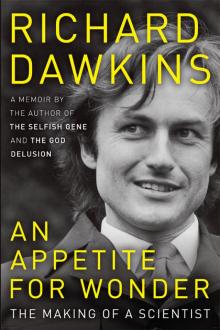 An Appetite for Wonder
An Appetite for Wonder